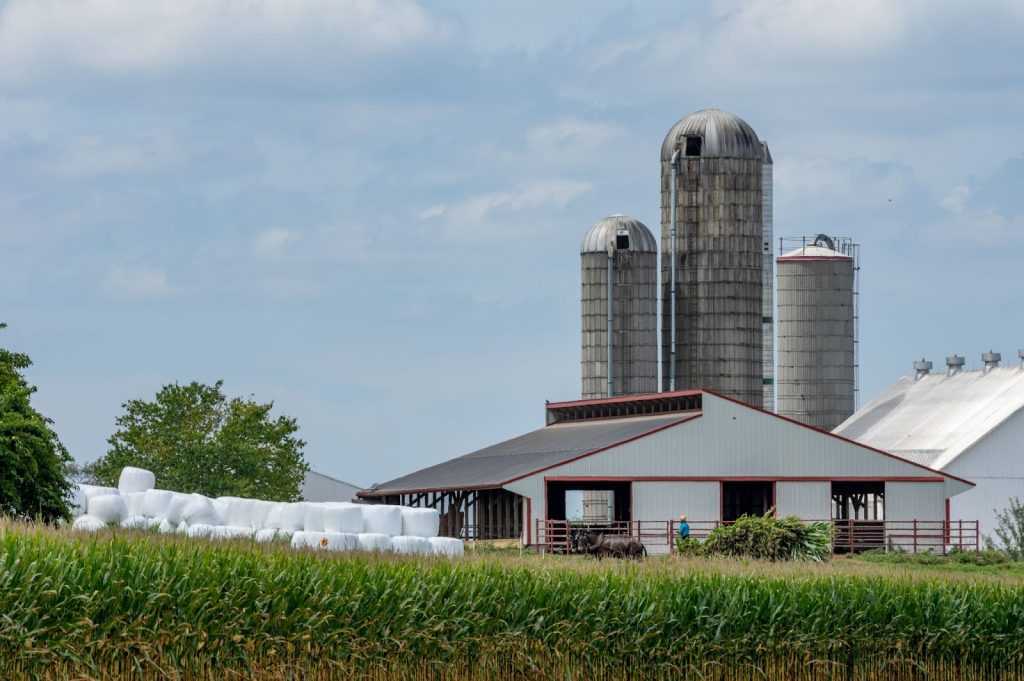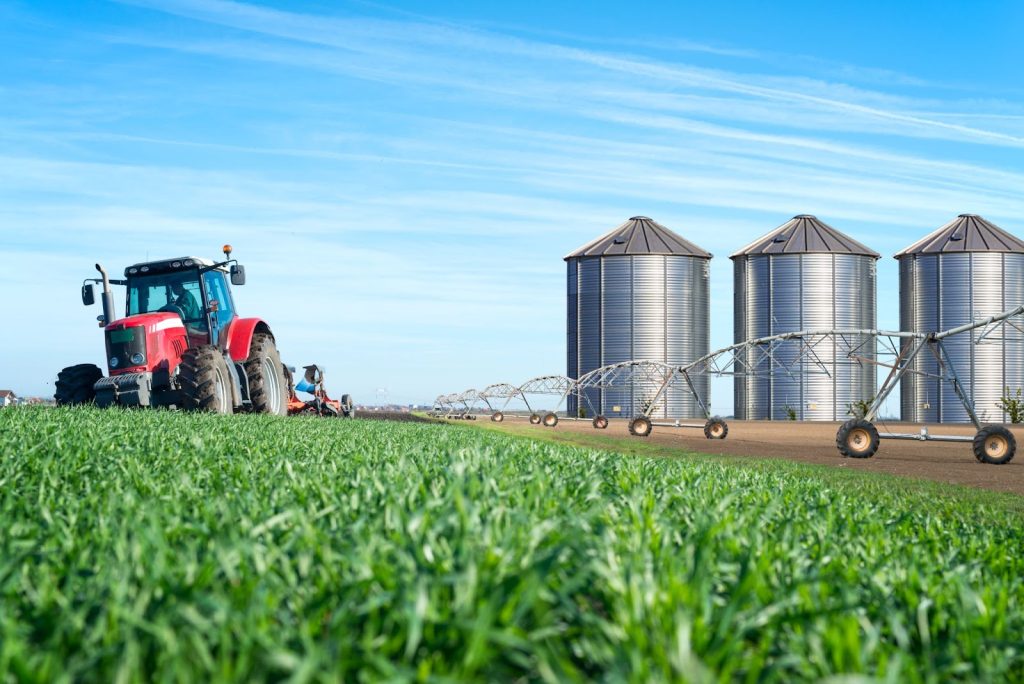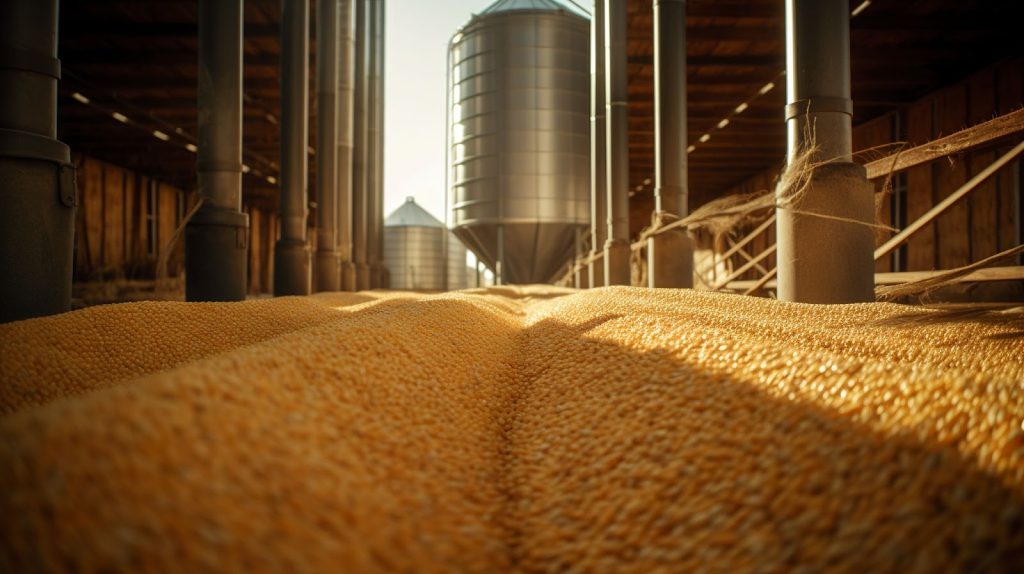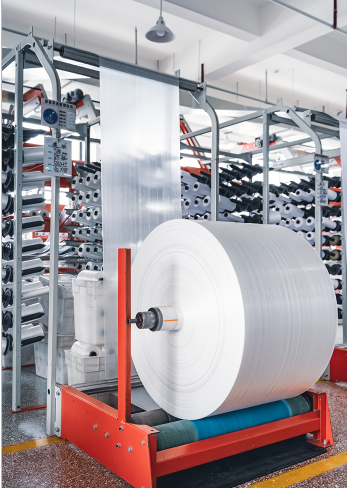
Toutes les structures de stockage de céréales ne servent pas le même objectif, et comprendre la différence entre un silo et un silo à grains pourrait vous permettre d’économiser votre récolte et votre budget.
Bien que ces deux éléments soient courants dans les fermes, chacun joue un rôle très différent dans le stockage des récoltes.
Du type de grain stocké au contrôle de l’humidité et au coût, le choix du bon système peut faire une grande différence dans les exploitations agricoles à petite et à grande échelle.
Ce guide décompose la comparaison entre silo et silo à grains en termes pratiques, en particulier pour les agriculteurs qui cherchent à optimiser le stockage des céréales à la ferme.
Nous présenterons également des alternatives modernes comme les sacs FIBC (également appelés sacs Tonne) qui changent la façon dont les fermes, grandes ou petites, stockent les céréales.

Lorsque les gens demandent « qu’est-ce qu’un silo ? », ils imaginent souvent les hautes structures cylindriques en béton ou en métal que l’on trouve dans les grandes fermes.
Les silos sont conçus pour stocker des matières à forte teneur en humidité comme l'ensilage ou les aliments fermentés, mais certains sont également utilisés pour les céréales.
Leur principal avantage réside dans leur construction hermétique, ce qui les rend idéaux pour le stockage anaérobie qui préserve le contenu pendant des périodes plus longues.
Les silos à grains sont de grands conteneurs ronds en acier avec des toits coniques et des fonds plats.
Ils sont conçus pour gérer efficacement le stockage des cultures sèches et sont couramment utilisés pour les récoltes telles que le maïs, le soja et le blé.
La plupart des silos à grains sont équipés de systèmes d’aération et de ventilateurs pour éviter l’accumulation d’humidité, une caractéristique essentielle dans le stockage du maïs à la ferme et d’autres céréales qui doivent rester sèches pour éviter la détérioration.
| Fonctionnalité | Silo | silo à grains |
| Utilisation principale | Stockage à forte humidité (par exemple, ensilage) | Stockage de céréales sèches |
| Forme et structure | Grand et étroit | Court et large |
| Matériel | Béton, acier | Acier ondulé |
| Système de ventilation | Rarement inclus | Essentiel pour la conservation des céréales |
| Durée de stockage | À long terme | Court à moyen terme |
| Entretien | Plus haut | Plus facile |
| Accessibilité | Plus complexe | Chargement et déchargement plus faciles |
En bref : si vous devez stocker des matières humides et fermentées, optez pour un silo. En revanche, pour des céréales sèches et une gestion plus facile, les silos à grains constituent souvent un meilleur choix.
Stockage de céréales dans les petites exploitations agricolesLes petites exploitations agricoles peuvent trouver la construction de silos ou de silos à grains de grande taille trop coûteuse. Dans ce cas, des systèmes de stockage flexibles et évolutifs comme les sacs FIBC offrent une solution pratique.
Grandes fermes:Dans les grandes exploitations, il est courant d'utiliser des silos à grains pour stocker les récoltes sèches et de compter sur des silos pour contenir les aliments pour animaux ou les matières fermentées.

La planification d’une zone de stockage de céréales à la ferme implique de prendre en compte plusieurs facteurs importants.
Outre les systèmes de stockage fixes, de plus en plus d'agriculteurs se tournent vers des conteneurs à grains portables et empilables, qui ne nécessitent pas d'installation permanente. C'est là que les sacs FIBC, aussi appelés sacs de tonne, entrent en jeu.
Les sacs FIBC (conteneurs intermédiaires flexibles en vrac) sont de grands sacs tissés très résistants sacs en polypropylène utilisé pour stocker et transporter des matières sèches, notamment des céréales.
Pour les petites et moyennes exploitations, ces sacs deviennent un choix incontournable pour le stockage principal ou de secours des céréales à la ferme.

XIFA est un grossiste en emballages en vrac de confiance, proposant sacs FIBC de haute qualité adapté à l'agriculture.
Leurs sacs de tonne sont fabriqués à partir de tissu tissé résistant, doublés en option pour résister à l'humidité, et comportent des boucles de levage pour une manipulation facile.
Avec une quantité minimale de commande de 1 000 pièces, XIFA garantit que les fermes et les entreprises agricoles peuvent obtenir une qualité constante à grande échelle.
Que vous dirigiez une petite ferme ou que vous gériez des centaines d'hectares, les sacs XIFA peuvent servir de complément économique, voire d'alternative, aux bacs et silos traditionnels.
Avant l’avènement des systèmes de stockage modernes, les granges et les greniers étaient la norme.
Les granges stockaient souvent le grain dans des sacs ou des tas en vrac, tandis que les greniers étaient dotés de planchers surélevés en bois ou en pierre pour empêcher les rongeurs et l'humidité d'entrer.
Aujourd'hui, ils sont toujours utiles pour le stockage des céréales dans les petites exploitations agricoles, mais la plupart ont été remplacés ou complétés par des bacs, des silos ou des sacs.

Dans le choix entre silo et silo à grains, le contexte est important. Le type de grain, le taux d'humidité, le climat, la taille de l'exploitation et le budget jouent tous un rôle.
Mais vous n'êtes pas obligé d'en choisir un seul. De nombreuses exploitations agricoles combinent désormais différents systèmes de stockage, comme des bacs pour le stockage longue durée, des sacs FIBC pour le débordement ou la mobilité, et des silos pour les aliments spécialisés.
Grâce aux sacs FIBC de XIFA, les exploitations agricoles disposent désormais d'un moyen simple et évolutif de gérer le stockage des céréales, ce qui est particulièrement utile lorsqu'une expansion rapide ou des solutions à court terme sont nécessaires.




